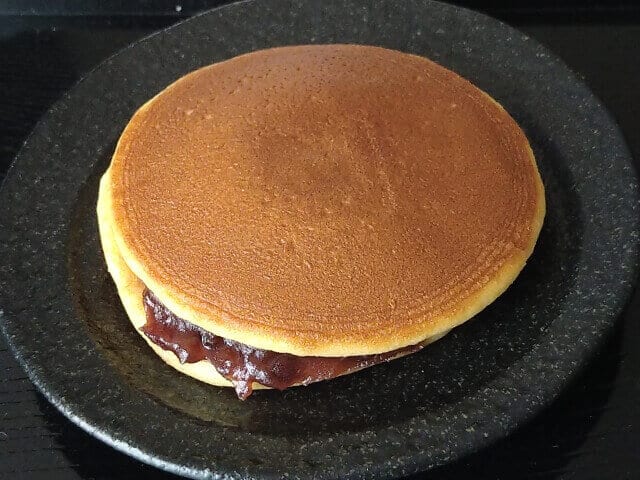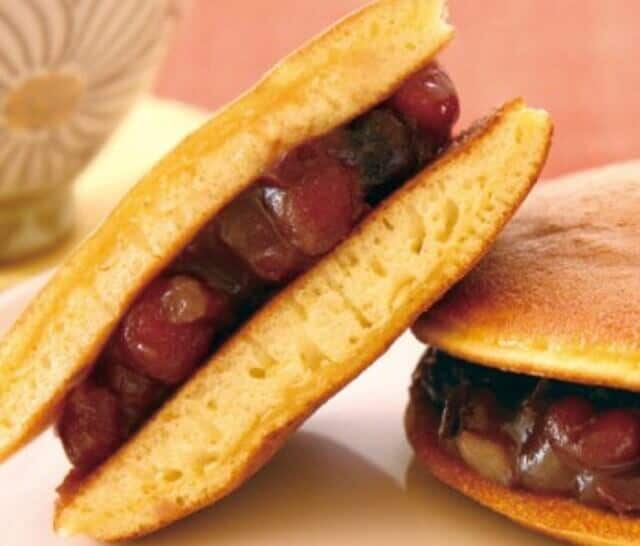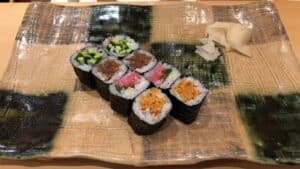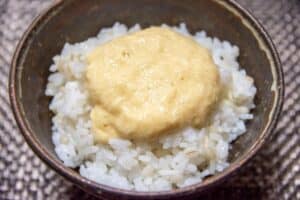If you’re a fan of traditional Japanese cuisine or simply have a sweet tooth, you won’t want to miss out on reading about Dorayaki! This delectable treat is a beloved dessert generation in Japan loved. With its soft and fluffy pancake-like buns and sweet red bean paste filling, Dorayaki is a satisfying treat that will delight your taste buds. Whether you’re a foodie who loves to explore new culinary experiences or simply looking for a new sweet treat to try, this article is a must-read. So sit back, relax, and let the rich and delicious flavors of Dorayaki transport you to a world of sweet indulgence!
What is Dorayaki?
Dorayaki is a puffed food and Japanese confectionery that is usually made by sandwiching red bean paste between two slightly puffed disc-shaped castella-like dough pieces. Japanese make this into moist castella dough by adding honey and baking. It is a popular snack food in Japan and you can find them in many Japanese bakeries and confectioneries.
Dorayaki History / Origin

There is a theory that the name “dorayaki” comes from its shape resembling a gong, a percussion instrument played when a ship departs, or that they baked the dough on a gong instead of an iron plate. Regarding the origin of “Dorayaki”, there is a legend that when Minamoto no Yoshitsune escaped to Oshu, he left behind a gong in the old days.
Another theory is that the original form of “dorayaki” dates back to the early Edo period, leading to a confectionery called “sukesoyaki,” which is said to be a thin square of dough filled with bean paste and wrapped. It’s like today’s Kintsuba. After that, the round “dorayaki” was born in the early Meiji period, but it is far from the one we know of today.
According to Japanese folklore, the dish was first created during the Edo period (1603-1868) by a samurai named Benkei. The story goes that Benkei was cooking pancakes in his kitchen and accidentally dropped some azuki bean paste on one of the pancakes, creating the first dorayaki. The dish quickly gained popularity and became a staple of Japanese sweets.
Difference of Mikasa and Dorayaki

Mikasa and Dorayaki are both traditional Japanese sweets, but they are different in their ingredients and preparation methods. Dorayaki is a type of sweet pancake that consists of two small round pancakes sandwiching a sweet red bean paste filling. The pancakes are from a batter that includes flour, sugar, eggs, and baking powder.
On the other hand, Mikasa is a traditional Japanese confection made from mochi (sweet rice cake) filled with sweet red bean paste. The mochi is soft and chewy and has a slightly sticky texture. The red bean paste filling is similar to that used in dorayaki, but the overall texture and taste of Mikasa are quite different.
How to choose order dorayaki

Choose at the store
How about choosing a shop that makes it, such as a Japanese confectionery shop or a dorayaki specialty shop? You can enjoy the traditional taste at long-established stores with a long history. Also, dorayaki from a well-known store has a good reputation for its taste, so it shouldn’t be a problem.
Pay attention to the expiration date
When purchasing, be sure to check the expiry date and expiration date of the dorayaki. Depending on the product, some are as short as 3 days from manufacturing. Frozen products can last about a month, so it’s convenient when you can’t eat them right away. Let’s eat deliciously within the deadline.
Choose by taste (standard red bean paste, unusual)
In addition to the standard dorayaki with a simple red bean paste, there are also those with white bean paste and sweet potato paste, as well as those with fresh cream, custard cream, chocolate cream, and flavors such as strawberry and matcha. And so on.
Choose by appearance
The appearance of the dorayaki itself varies, such as those with the store name logo stamped on them, and those that can have letters engraved on them. In addition, some come in stylish packaging, and some come in luxurious boxes, which is for gifting to others.
Various Dorayaki

Matcha azuki beans

“Tsubuan” made from adzuki beans from Tokachi, Hokkaido, and a rich matcha cream made by kneading high-quality matcha into fresh cream from Hokkaido.
Azuki bean dorayaki

Locals slowly cooked this for two days. It’s not too sweet and has a pleasant sweetness.
Matcha cream dorayaki

“Matcha warabi mochi” and “sweetened adzuki beans” are sprinkled in the “matcha fresh cream,” which is made by kneading high-grade matcha into fresh cream from Hokkaido.
Red Bean Cream Dorayaki

It’s a creamy adzuki bean made by sprinkling adzuki beans from Tokachi into fresh cream from Hokkaido.
Dorayaki FAQ

- Name of Dorayaki
In the Kinki region, what they call dorayaki today is what they often call’ “Mikasa”, “Mikasa-yaki”, “Mikasa manju”, or “Mikasayama”. The name comes from the fact that the appearance of the confectionery resembles Mt.
- What is the shape of dorayaki?
Generally, the dough pieces are in the form of two disk-shaped sandwiches the bean paste, but there’s also another form called dorayaki.
Dorayaki Recipe

Dorayaki Ingredients
| Ingredients of Dorayaki for 2 persons | Measurements |
|---|---|
| Whole egg | 50g |
| Sugar | 50g |
| Weak flour | 50g |
| Baking soda | 0.7g |
| Mirin | 3g |
| Water | 12g |
| Tsubuan | 120g |
| Salad oil | 5g |
How to make Dorayaki
Put the whole egg in a bowl and loosen it with a whipper to cut the stiffness. Add sugar and mix by moving the whipper from side to side. It’s OK if it becomes slightly thick (about 2-3 minutes). Then, add a little water to the baking soda, dissolve it, and put it in a bowl. Sift the cake flour and mix with a whipper and mix until the dough is smooth.
Wrap and let rest for about 30 minutes. Keep it in the refrigerator in the summer. Then, add water and mirin and mix with a whipper.
Heat a frying pan or hot plate (160-200°C), apply salad oil and warm it up again. When the oil is hot, scoop the batter with a spoon and drop it into the frying pan. Bake the back side. When the back side is baked, put it on a tray and remove the rough heat.
Put the bean paste into the dorayaki and sandwich it between two sheets. After adding the bean paste, lightly press the edge of the skin to close it.
Where to buy Dorayaki
Usagiya (うさぎや)

The history of Japanese dorayaki starts here. Usagiya’s dorayaki has a taste that has remained unchanged for over 100 years. You’ll be surprised at the difference between the deliciousness of the still-warm batter, which flows from the thick bean paste, and the moist sponge cake, which has soaked in the flavor of the bean paste over time.
Kameju (御菓子司 亀十)

Kameju’s dorayaki is recommended for those who say. It is a famous store with a history of about 90 years at Asakusa Kaminarimon. You can already feel the fluffy texture from the appearance. Once you eat it, you will never forget the tenderness of the adzuki beans wrapped in the softness of the castella.
Suzumeya (すずめや )

Suzumeya is highly recommended as a souvenir. The sweetness is modest and the taste of the ingredients is well-balanced. What you should pay attention to is the thickness of the skin. The dough that contains air firmly does not change its texture even after a long time. The volume of the bean paste and the yellow skin that best match is moist and fluffy.
Takeaway

In conclusion, Dorayaki is a must-try for anyone who loves traditional Japanese sweets or is simply looking for a delicious and unique dessert experience. With its soft and fluffy pancake buns and sweet red bean paste filling, Dorayaki offers a satisfying combination of flavors and textures that will delight your taste buds. So if you’re planning a trip to Japan, be sure to add Dorayaki to your list of must-try foods and experience the rich and delicious flavors of this traditional Japanese dessert for yourself!
Check out below to know more about Japanese sweets or Japanese confectionery.
















Comments